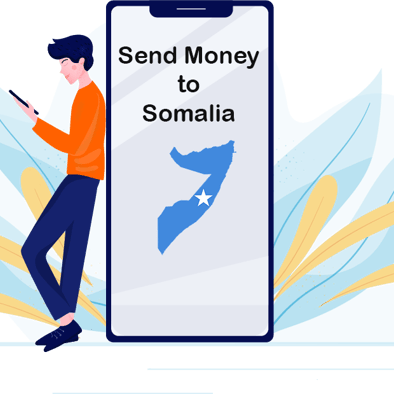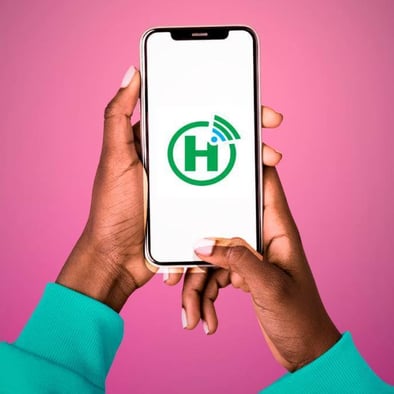The Mobile Money Revolution in Somalia: Transforming Lives and Boosting the Economy
Mobile money has transformed Somalia into a global leader in digital financial services, offering millions of people access to fast, secure, and convenient financial solutions. With platforms like EVC Plus and Zaad,.
1/28/2025


Somalia is undergoing a digital transformation, and at the heart of this revolution is the widespread adoption of mobile money services. In a country where traditional banking infrastructure is limited, mobile money has emerged as a powerful tool, reshaping the way Somalis manage their finances, conduct business, and interact with the economy. This innovative solution has propelled Somalia into the ranks of global leaders in mobile money usage, offering a model for other countries to follow.
The Rise of Mobile Money in Somalia
Mobile money services were introduced in Somalia in the early 2010s as a response to the lack of accessible banking facilities. With only a small percentage of the population having access to formal bank accounts, mobile money became a necessity rather than a convenience. Companies like Hormuud Telecom, Telesom, and Golis Telecom recognized the potential of mobile money and launched platforms such as EVC Plus, Zaad, and Sahal to meet the growing demand for financial services.
Today, over 90% of Somali people use mobile money regularly, making it one of the most mobile money-dependent countries in the world. From urban centers to remote rural areas, mobile money has become an essential part of daily life, enabling people to transfer funds, pay for goods and services, and even save money—all through their mobile phones.
How Mobile Money Works
Mobile money services in Somalia are simple, accessible, and user-friendly. Users register for an account through their mobile service provider, after which they can deposit or withdraw money via agents located throughout the country. Transactions are conducted through USSD codes or mobile apps, allowing users to send money, pay bills, and purchase goods with just a few taps on their phone.
What makes mobile money particularly effective in Somalia is its reliance on local currencies and its compatibility with the unique needs of Somali society. Transactions are quick, secure, and free of complex banking procedures, making them ideal for a population that has faced decades of economic and institutional challenges.
Impact on Daily Life
The impact of mobile money on Somalia’s economy and society has been profound. Here’s how it’s transforming lives:
Financial Inclusion:
Mobile money has brought financial services to millions of Somalis who were previously excluded from the formal banking system. This inclusion has empowered individuals, particularly women and rural populations, by giving them control over their finances.Convenience and Accessibility:
Whether it’s paying for groceries, school fees, or medical expenses, mobile money has made transactions faster and easier. Users no longer need to carry cash, reducing the risks associated with theft and loss.Boosting Small Businesses:
Entrepreneurs and small business owners have benefited immensely from mobile money. They can now receive payments instantly, manage their cash flow efficiently, and access a broader customer base. Many informal businesses operate solely through mobile money, contributing to the growth of Somalia’s economy.Humanitarian Aid Delivery:
In a country that relies heavily on humanitarian aid, mobile money has become a lifeline for vulnerable populations. Aid organizations use mobile platforms to distribute cash assistance directly to recipients, ensuring transparency and reducing logistical challenges.Cross-Border Transactions:
Somalia’s large diaspora community frequently sends remittances back home, and mobile money has streamlined this process. Families can now receive funds instantly, enhancing financial stability and supporting local economies.
Challenges and Opportunities
Despite its success, mobile money in Somalia is not without challenges. Some of the key issues include:
Regulatory Framework:
The absence of robust regulatory systems has raised concerns about money laundering, fraud, and consumer protection. However, efforts are underway to establish clear guidelines to ensure the security and stability of mobile money services.Digital Literacy:
While mobile money is widely used, there is still a need to improve digital literacy, particularly among older generations and rural populations, to ensure they can fully benefit from these services.Interoperability:
Currently, mobile money platforms in Somalia operate independently, making it difficult for users of different services to transact with one another. Introducing interoperability could enhance the efficiency and reach of mobile money.
A Glimpse into the Future
The future of mobile money in Somalia looks promising. As mobile penetration continues to grow, the potential for expanding financial services is immense. Some of the anticipated advancements include:
Integration with Digital Platforms:
Mobile money is expected to integrate further with e-commerce platforms, creating opportunities for online shopping and digital entrepreneurship.Microfinance Opportunities:
Mobile money can pave the way for microloans and savings programs, helping small businesses grow and individuals invest in their futures.Enhanced Security Measures:
With the development of regulatory frameworks, mobile money providers will likely introduce advanced security features to protect users and build trust.







